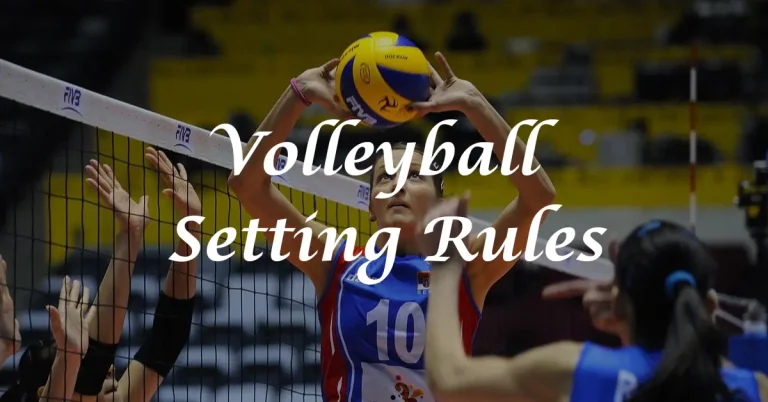What Are the Rules For Hitting Volleyball? Essential Rules & Techniques Explained
Are you a seasoned volleyball player or a professional one? A question always arises: What are the actual volleyball hitting rules? Don’t worry about the given topic. You will understand it easily, and it’s designed and written so that everyone who is a beginner or an enthusiast can understand and implement it easily.
What is Hitting?
Hitting is one of the most dynamic and exhilarating aspects of this sport. It requires precision, strategy, and an understanding of legally touching the ball. In this blog post, we’ll explore everything you need to know about hitting in volleyball – from basic rules to advanced techniques – so you can become a formidable force on the court.

Importance of Understanding the Rules for Hitting
In volleyball, hitting is a fundamental skill that every player must master. It effectively strikes the ball over the net and into the opponent’s court to score points. Understanding the rules for hitting is essential because it ensures fair play and maintains a level playing field for both teams. By knowing what constitutes legal hits and what doesn’t, players can avoid penalties such as illegal hits or touching the net during an attack. This knowledge also helps prevent injuries caused by improper technique or reckless behavior on the court.
Moreover, following the rules for hitting contributes to successful teamwork and game strategy. Each player has specific roles in executing different hits, like spikes or tips. By following these rules, players can coordinate their movements effectively while maintaining proper positioning on the court.
Basic Rules for Hitting a Volleyball
When it comes to hitting a volleyball, there are some basic rules that every player should follow. These rules ensure fair play and help maintain the integrity of the game. Here are some key guidelines to remember when you step onto the court.Goals of Hitting
In volleyball, hitting is a fundamental skill crucial for scoring points effectively. Successful hitting requires a balance of power and accuracy, achieved through proper technique and timing. Players aim to generate maximum power to overcome blockers while strategically placing their attacks to exploit openings in the opponent’s defense. Versatility is key, as hitters must possess a range of shots to adapt to different situations. Consistency in performance ensures that hitters maintain control over their attacks, minimizing unforced errors and maximizing scoring opportunities.

Types of Hitting In Volleyball
Hitting in volleyball is of various types, each serving a different purpose and requiring specific techniques. Let’s take a closer look at some of the most common types of hitting in volleyball.Advanced Techniques and Strategies for Hitting
To take your hitting skills to the next level in volleyball, learning advanced techniques and strategies is crucial. These will help you hit the ball with power and increase your accuracy and ability to outsmart opponents.//**Remember that mastering these advanced techniques takes time and consistent practice. Incorporate them into drills during training sessions while focusing on perfecting timing, power generation, shot variation, court awareness, and communication skills.**//

Common Mistakes to Avoid When Hitting a Volleyball
By avoiding common mistakes, you can become a pro and generate optimal performance during gameplay. The common mistakes a player makes during hitting are given below:How to Improve Your Hitting Skills
| Dos | Don’ts |
| Do aim to make clean contacts with the ball | Don’t carry or hold the ball |
| Do follow through with your hitting motion | Don’t double hit the ball |
| Do communicate with your teammates | Don’t touch the net while hitting the ball |
| Do practice proper footwork | Don’t use illegal hitting techniques |
FAQs:
Conclusion:
Knowing volleyball hitting rules and techniques is crucial for players at all levels, from beginners to professionals. Understanding the fundamentals, such as proper form, timing, and court positioning, lays the foundation for successful hitting. By consistently practicing basic and advanced techniques, avoiding common mistakes, and seeking feedback, players can improve their hitting skills and become valuable assets to their teams, contributing to effective gameplay and scoring opportunities.





